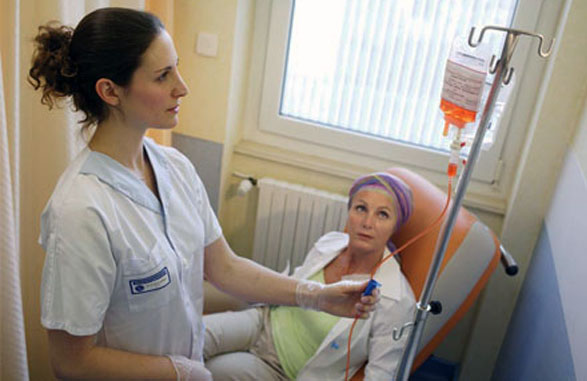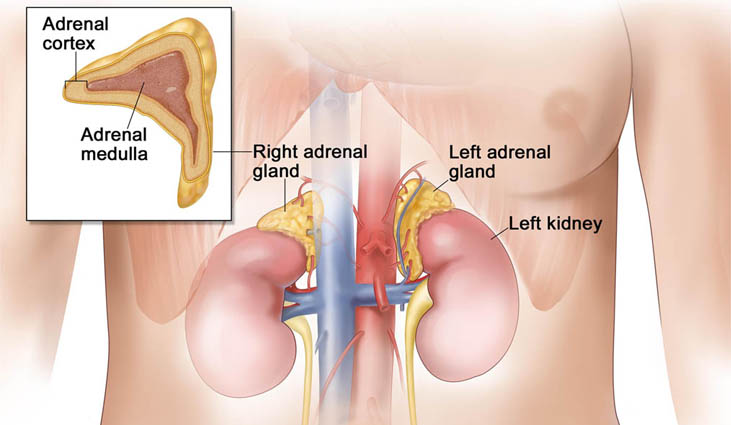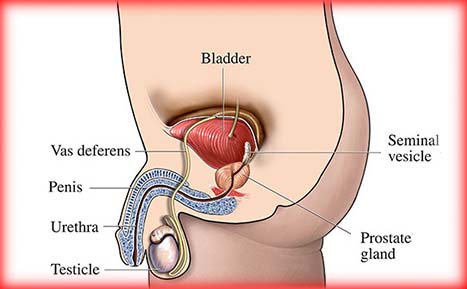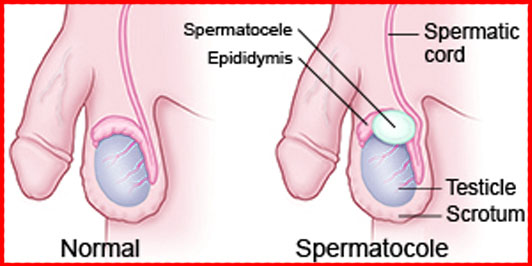Adrenal Gland Disorders
The adrenal glands are responsible for many processes in the body. When functioning correctly, they produce various hormones that trigger chemical activity in every system. But what happens when disorders, such as Cushing’s syndrome, interfere with those hormonal mechanisms? The following information should help you discuss the adrenal gland and its complex, interrelated disorders with your physician.
What are adrenal glands?
Located on top of both kidneys, the adrenal glands are triangular-shaped and measure approximately half an inch in height and three inches in length. The inner part (adrenal medulla) of the adrenal glands secretes hormones such as adrenaline that affect blood pressure, heart rate and sweating. The outer part (adrenal cortex) secretes many different hormones that control the use of fats, proteins and carbohydrates in the body. The cortex also secretes male sex hormones as well as mineralocorticoids that control blood pressure and the levels of salt and potassium in the body.
What can go wrong with adrenal glands?
If the adrenal glands are not functioning correctly the cause could be outside the gland. For instance, the hypothalamus, a part of the brain, or pituitary glands could fail to produce hormones that control the adrenal glands. A problem inside the adrenal gland could be caused by some kind of disease or infection in or around the gland. Major problems occur when the adrenal glands produce too many or too few hormones.
Cushing’s syndrome: Cushing’s syndrome refers to a complex set of symptoms and physical abnormalities caused by excess cortisol in the body. Most prevalent in adults between the ages of 20 and 50, it occurs when too much cortisol is produced in the adrenal glands. It can also be caused by excessive or prolonged use of steroids.
Prolonged natural production of cortisol can be linked to various sources, the most common of which is a tumor of the pituitary gland. The tumor stimulates overproduction of corticotrophin, also called adrenocorticotropic hormone (ACTH), a kind of pituitary control switch that governs growth and activity of the adrenal glands. Excesses of corticotrophin activate adrenal gland overgrowth, lead to excess cortisol secretion. This is referred to as Cushing’s syndrome. This pituitary hypersecretion of corticotrophin accounts for 75 to 85 percent of all Cushing’s cases. Other sources include adrenal tumors and ectopic ACTH, in which the hormone is overproduced by malignant tumors elsewhere in the body. The other 15 to 25 percent are due to adrenal cortical tumors.
Cushing’s sufferers can be identified by their characteristic “moon” faces (round and full) and “buffalo” humps (fat collected between the shoulders). The disorder is marked by many other symptoms, the most common of which are obesity (90 percent), hypertension (80 percent), diabetes (80 percent), weakness (80 percent), excessive body hair (70 percent) and menstrual abnormalities/sexual dysfunction (70 percent).
A diagnosis of Cushing’s syndrome is based on medical history, physical examination and laboratory tests to determine cortisol overproduction. Patients are usually asked to collect a 24-hour urine sample to be screened for high levels of the hormone.
Once the syndrome has been diagnosed, imaging and other tests may be ordered to identify the exact cause. A CT scan or MRI may be used to evaluate any pituitary or adrenal tumors. Both imaging techniques produce cross-sectional views of the body, but use different technologies. In either case, the test is painless, accurate and quick.
Cancer of the adrenal gland: Also characterized by overproduction of hormones, adrenal gland cancers are very rare afflicting only one or two per one million people. When they occur, however, these tumors may secrete excess amounts of cortisol or other adrenal products. For example, virilizing (masculizing) hormones are often produced. The symptoms you might experience are related to those hormones. For instance, a malignancy in the cortex ? an adrenocortical carcinoma ? produces symptoms similar to Cushing’s syndrome: high blood pressure, weight gain, excess body hair, osteoporosis and diabetes.
Diagnosis for adrenal cancer usually begins with blood tests to evaluate levels of certain hormones, including cortisol, dehydroepiandrosterone (DHEA) and testosterone. It may also include MRI and CT scans to determine the extent of the disease.
Pheochromocytoma: Usually benign, pheochromocytoma refers to a rare tumor of the medulla that secretes excessive amounts of the hormones epinephrine and norepinephrine, resulting in high blood pressure. An estimated 800 cases are diagnosed yearly in the United States, making it extremely rare.
The most common symptoms are headache, heart palpitations and excessive and inappropriate perspiration. Less commonly encountered symptoms include nervousness and anxiety, tremor, paleness, nausea, weakness, chest or abdominal pains, fatigue and weight loss.
Pheochromocytoma tumors occur in less than 1 percent of hypertensive patients and 90 percent of them are benign. Experts recommend that all hypertension sufferers be screened with blood or urine tests for overproduction of catecholamines or their metabolites since pheochromocytoma tumors secrete these neurotransmitter hormones in excess. In fact, checking for high levels of adrenaline or cortisol is usually done for adrenal malignancies of both the medulla and cortex. In either case, further CT scans or MRI will help your doctor determine the location and extent of the disease.
Pheochromocytoma can be life threatening if untreated and can cause stroke or damage to the kidneys, brain or heart. Drugs are available to control symptoms prior to tumor removal.
Hyperaldosteronism: The disorder, hyperaldosteronism, is defined by the body’s overproduction of aldosterone, a hormone that controls sodium and potassium levels in the blood. The overproduction of aldosterone leads to hypertension. Exceedingly rare, most cases occur in women, ages 30 to 50. The condition results from a benign tumor of the adrenal gland and occurs more frequently in women than men. It leads to potassium loss and increased sodium reabsorption by the kidneys.
There are two types of hyperaldosteronism. It can occur from an abnormal growth (hyperplasia) in both adrenal glands or from a benign tumor of one of the adrenal glands.
The primary symptom of hyperaldosteronism is moderate hypertension. In addition, a patient may experience reduced blood pressure when a person stands after lying down. Constipation, muscle weakness (especially in the legs), excessive urination, excessive thirst, headache and personality changes are also possible symptoms. Some patients will show no obvious symptoms.
When hyperaldosteronism is suspected, blood and urine tests may be conducted to check for a high level of aldosterone and low levels of potassium and renin activity. A CT scan is also ordered to detect the side of an adenoma or bilateral hyperplasia.
How are adrenal gland disorders treated?
Cushing’s syndrome: Treatment for Cushing’s syndrome depends on successfully identifying the underlying cause of cortisol overproduction (e.g., an adrenal or pituitary tumor) and removing it. If your disorder is a spin-off from long-term use of glucocorticoid hormones (e.g., prednisone) for another disease, your doctor may reduce or discontinue the dosage. But if it is linked to an underlying benign or malignant adrenal tumor, the growth will be removed surgically.
Pituitary adenoma: Transsphenoidal adenomectomy is the most widely-employed technique to remove a benign, corticotrophin-secreting pituitary tumor. This procedure relies on a microscope and small instruments to remove the gland through a nostril or opening below the upper lip. While the technique is extremely delicate, cure rates can be as high as 80 percent if performed by an experienced surgeon. But, if the procedure fails, or produces only a temporary cure, it can be repeated. Your doctor, however, may also prescribe radiation, especially if you are not an adenomectomy candidate. Improvement with radiation occurs in 40 to 50 percent of adults and 80 percent of children.
Adrenal benign and cancerous tumors: Benign or cancerous adrenal tumors are removed by an adrenalectomy, which is surgical removal of the entire gland. If the growth is small, your doctor will perform a laparoscopy, working through a small incision in the abdominal wall utilizing fiber-optic instruments. He or she will use an open surgical technique in selected cases. You may need follow-up chemotherapy if there is adrenal carcinoma.
Pheochromocytoma: Controlling high blood pressure with medications is the first step in treating pheochromocytoma. Once stabilized, the abnormal adrenal gland may be removed either through a laparoscopic or “open” surgical technique.
Hyperaldosteronism: Treatment for Conn’s syndrome resulting from a solitary tumor centers on removing the growth by laparoscopic surgery. Individuals who have persistent high blood pressure after the procedure may require antihypertensive medication. If bilateral hyperplasia is the cause of hyperaldosteronism, the focus is on treatment with specific medications that block the effect of aldosterone.
What can be expected after treatment for adrenal gland disorders?
Cushing’s syndrome: If you have Cushing’s syndrome, your prognosis is linked to the underlying cause of cortisol overproduction. Treatment usually leads to significant improvement, even cure for a significant number of sufferers. But certain tumors may recur. The cure rate for adrenal malignancies, for instance, is less than 50 percent, even in patients with localized disease that can be removed. Conversely, the prognosis for adrenal adenomas is excellent. Additionally, surgical removal of the glands may lead to full recovery from pituitary Cushing’s even though that tumor also may recur.
Adrenal cancer: Surgery for adrenal cancer may be followed by chemotherapy. Because treatment removes the source of many important hormones, you may need hormonal supplements. If the malignancy returns or spreads, you may require additional surgery or chemotherapy. The prognosis for adrenal cancer is poor. The five-year survival rate for adrenal cancer is 10 to 35 percent.
Pheochromocytoma: Without adequate treatment, the severe high blood pressure associated with pheochromocytoma can lead to heart attack or stroke. After treatment, the outlook is good for most patients. However, hypertension may return and must be controlled with medication. Rarely, pheochromocytomas are malignant and recur.
Hyperaldosteronism: With early diagnosis and treatment, prognosis for primary hyperaldosteronism is good.
Frequently asked questions:
Is Cushing’s syndrome inherited?
Most cases are not inherited. In rare instances, however, individuals may have a hereditary predisposition to an endocrine tumor that could cause Cushing’s syndrome.
Can Cushing’s syndrome be prevented?
No. There is no known prevention for Cushing’s syndrome.
What is the pituitary gland and how does it work?
Located at the base of the head, the pituitary gland is the most important part of the endocrine system. Despite its small size, the pituitary gland is often referred to as the master gland because it regulates the activity of other endocrine glands and body processes. Specifically, it secretes corticotrophin, which stimulates the adrenal glands to activate other hormones, which initiate multiple chemical activities.
What are incidentally discovered adrenal masses and how are they treated?
Incidentally discovered adrenal masses show up accidentally on one to two percent of all CT scans and MRIs. They are managed based on their origin. For instance, cystic (or fluid-filled) growths are observed until increased size suggests removal; solid or dense lesions larger than five centimeters are removed immediately.
What is secondary hyperaldosteronism?
Secondary hyperaldosteronism is generally related to hypertension and is often tied to disorders such as renal artery disease, cardiac failure, liver disease and nephrotic kidney syndrome. In each case, the disease itself causes elevated aldosterone. The prognosis, after treatment with medications and diet, depends on the primary disease.






Genuinely when someone doesn’t know after that its up to other people that they will help, so here
it takes place.
Appreciate the advice. Will give it a try.
Nice blog here! Also your site loads up fast!
What web host have you been using? Should I obtain your affiliate connect to your host?
If only my site loaded as quickly as yours lol
I really like it whenever people gathering and share ideas.
Great blog, make it up!
After looking over some the blog articles on your own website, I truly appreciate
your means of blogging. I bookmarked it to my bookmark website list and will be checking
back soon. Have a look at my website too and let me know your opinion.
Hello There. I found your blog using msn. This is a very well written article.
I am going to make certain to bookmark it and return to read through more of your useful information. Thank you for the post.
I am going to certainly comeback.
Outstanding post however I was wondering if you could
write a litte more on this subject? I’d be very grateful if you
could elaborate a little bit more. Appreciate it!
Ahaa, its good dialogue on the topic of this article here at this
weblog, I have read all that, so at this time me also commenting at this place. http://yahoo.org
I’m not positive where you are having your information, however great topic.
I should spend a while studying far more or exercising more.
Thanks for fantastic information I was once trying to find this information for
my mission.
I whenever utilized to study post in news papers the good news is when i am a user of net thus from
now I am using net for posts, because of web.
Wonderful post! We are linking to this particularly great article on our website.
Continue the great writing.
I am extremely impressed together with your writing skills as neatly as using the layout
to the weblog. Is that this a paid topic or would you modify it
yourself? Anyway keep up the excellent high quality writing, it is uncommon to check a great weblog like this one today..
Should you desire to obtain quite a lot with this post then you must apply
such methods to your won blog.
It’s appropriate time to earn some plans for future
years and it’s time and energy to be at liberty. I actually have
check this out post and if I was able to I want to suggest you few interesting things or
tips. Maybe you could write next articles referring to this article.
I would like to read much more reasons for it!